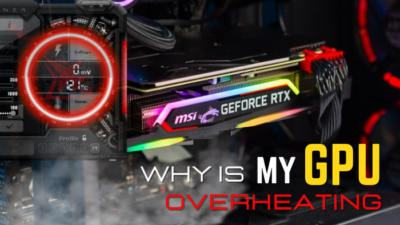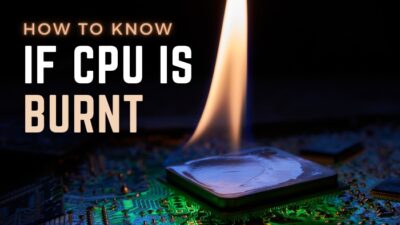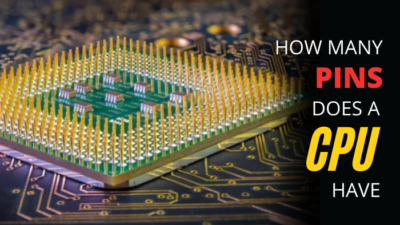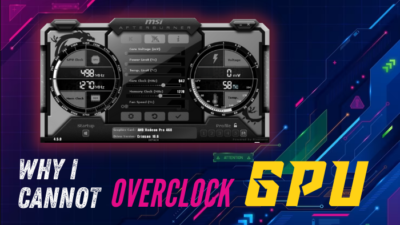Building a PC or buying a component for your PC is confusing nowadays. There are so many possibilities, and new options are coming every day.
Today, you purchased a PC and tried some new games but did not get a satisfying performance. Comparing the PC with your friend, you have found your PC spec is not much capable as your friend.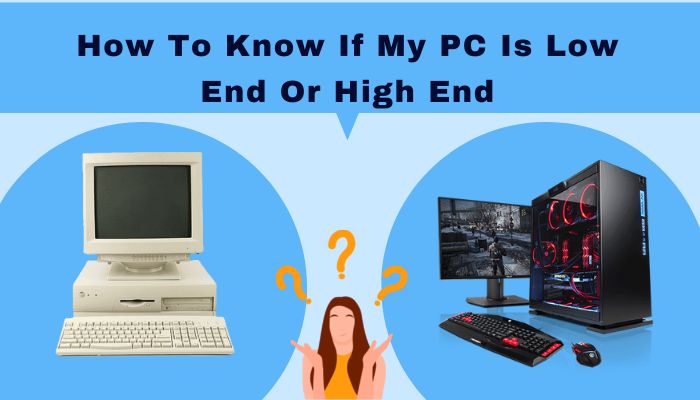
A PC becomes low or high-end depending on the performance. Some component helps a lot with the performance. But, do you know what makes your PC low or high-end?
Let’s jump into the article and find out if your PC is low or high-end.
What Determines Your PC Performance?
A PC is a collection of many components. CPU, GPU, RAM, and SSD come first for performance. Motherboard and other components help define a low and high-end PC.
The best products of each element make a high config PC, whereas low-performed parts give a low-quality performance.
Read the full article to know which component is making the performance better.
Here are the components that determine the performance of your PC:
CPU
The CPU is the central part of a PC. It’s the first and most important component that sets your PC performance.
CPU is vital for performance in everyday usage and gaming. A faster CPU can transfer data quicker, which helps in intensive work like gaming and graphics rendering.
Intel and AMD are releasing new processors every year, taking the high-end boundary higher and higher. And making the old specs get older and weaker in performance.
Intel and AMD are the leading manufacturers of CPUs. They are releasing CPUs of different generations and models. Looking at the generation and model number gives a basic idea of the low and high-end CPU.
Intel and AMD use similar numbers to determine their processor’s series.
Here is a table of low, mid, and high-end processors:
| Processor | Category |
|---|---|
| Intel i3, Ryzen 3 | Low-End |
| Intel i5, Ryzen 5 | Mid-End |
| Intel i7, Ryzen 7 | High-End |
| Intel i9, Ryzen 9 | Ultimate High-End. |
After the series’ name, Intel and Ryzen use a number to define the generation and model. The last three numbers determine the model, and the first one or two numbers tell the generation of the processor. For example, in the i9-12900 processor, 12 defines the generation, and “900” is the model number.
Also, letters at the end of the model number indicate a slightly better and more powerful version of the processor. Intel uses K, and AMD uses X and XT for their processor. For example, the i9-12900K is an unlocked version and performs slightly better than its base version, i9-12900.
Follow our guide to know What PC Parts You Can Buy Used.
GPU
When you think of gaming, graphics designing, and rendering, the first thing that comes to mind is the graphics card or GPU. A GPU handles the graphical task of a PC. A better graphics card dramatically boosts the performance and fps during gaming and graphics-intensive work.
Nvidia and AMD are the two big names in graphics card manufacturers. They offer a vast number of graphics cards in their lineup.
Nvidia has GTX and RTX series in their lineup. RTX offers better performance and ray tracing to its card.
Like CPU, the model number in the GPU tells the graphics card category within its generation. You can easily categorize the Nvidia graphics card by looking at the table below.
| Last Two Digits | Category |
|---|---|
| 30, 40, 50 | Low-End |
| 60, 70 | Mid-End |
| 80, 90 | High-End |
AMD also offers similar naming in their graphics card model. The first digit indicates the generation of the graphics card, and the last three digit shows the model number.
| Last Three Digits | Category |
|---|---|
| 300, 400, 500 | Low-End |
| 600, 700 | Mid-End |
| 800, 900 | High-End |
Check out our separate post on does RAM brand matter.
RAM
RAM has a lot of effects on a PC’s performance. RAM with more capacity, higher frequency, and lower latency indicates the performance of the RAM. More RAM capacity helps to lower the stuttering while gaming and rendering.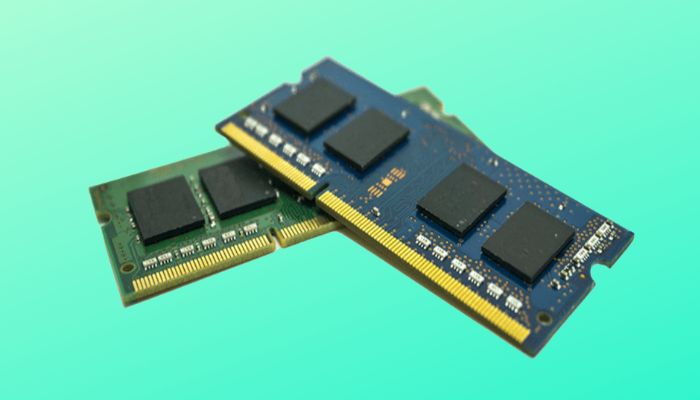
Look at the chart given below to know the RAM capacity needed for a high-end PC:
| Capacity | Category |
|---|---|
| Low-End | |
| 16 - 32 GB | Mid-End |
| 32 GB | High-End |
With the capacity, you need better frequency. Frequency is measured in MHz. Every generation doubles the frequency of the RAM. Check the RAM frequency of different generations below.
| Double Data RAM (DDR) | Frequency (MHz) |
|---|---|
| DDR1 | 200 - 400 |
| DDR2 | 400 - 1066 |
| DDR3 | 800 - 2133 |
| DDR4 | 1600 - 5333 |
| DDR5 | 3200 - 6400 |
Latency has an impact on performance. RAM with lower latency communicates faster, and it will give a couple of extra FPS while gaming.
A high-end PC uses the latest generation RAM with a lot of capacity. Low-end PCs don’t always support new generation RAM, which puts them backward.
Follow our guide to know can an overheating CPU cause shutdown.
Storage Device
The PC uses two types of storage devices, HDD and SSD. An SSD has 10 to 15 times more read and write speed than an HDD.
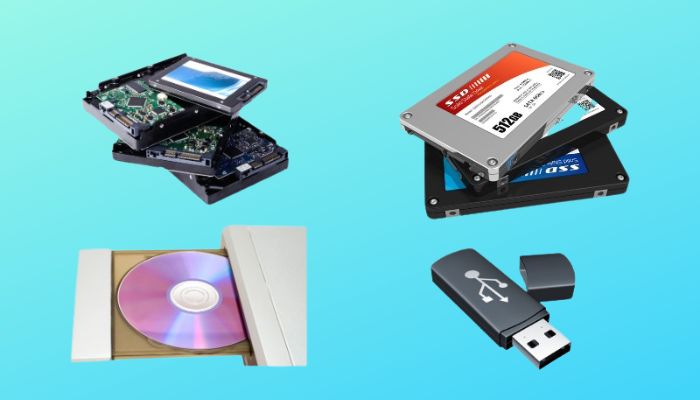
An SSD can be a SATA or NVMe. NVMe is much faster than SATA. Using NVMe in a low-end PC doesn’t give an actual performance. M.2 NVMe or PCIe NVMe SSD gives the best performance in a high-end pc.
Installing the operating system in an SSD performs way better than an HDD. All programs run faster, which is essential for a high-end PC.
Also check our exclusive tutorial on can increasing RAM help CPU usage.
Motherboard
The motherboard holds all the components in It. GPU, CPU, RAM, everything is connected with the motherboard. But generally, motherboards do not affect performance.
However, the motherboard helps with the performance when your components are overclocked. High-end motherboards have a better cooling system, power management, and tuning option, which helps while your PC is overclocked.
Lower-end motherboards don’t offer this kind of advantage while overclocked. High-end motherboards can also provide more options for the CPU and GPU. They support the latest and fastest CPU and GPU. On the other hand, low-end motherboards fail to give any of the best options.
Check out the easiest way to change Mouse polling rate.
PSU
The power supply unit is essential for your PC. A high-end PC needs more power to run its components. Powerful CPU and GPU are power hungry. Using a cheap PSU can harm the component.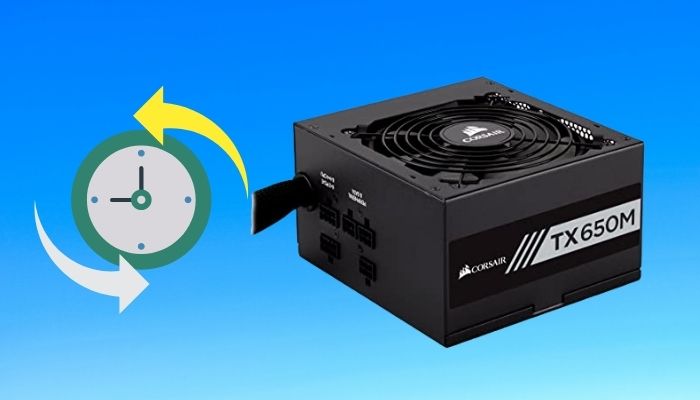
80 Plus certified PSU can give the best performance to a high-end PC. For a low-end PC, a standard PSU works quite well.
Cooling option
Cooling is essential to keep your components in good shape. High-end PCs generate more heat while gaming or doing heavy work. Casing fans can cool your PC a bit. But to cool down the CPU, you need an external cooler.
High-end PCs need AIO, water, or air cooler to cool down the CPU. Low-end PCs don’t need much cooling as they don’t produce much heat.
Other Components
Other components in PCs like monitor, keyboard, and mouse don’t affect the performance. But, using a good monitor can give you a better experience with the high-end config. You can visually experience better FPS or resolution with a good monitor.
How to Test My PC?
You can test your PC by checking the benchmark of components from a different website or using a third-party benchmark application. It won’t always give proper feedback because performance can vary from PC to PC.
So, why don’t you just test yourself?
Download some latest AAA title games to check the performance. High-end PCs will always perform better than mid or low-end PCs. Playing at 1440p in a high-end config will give 60+ FPS in a high setting and easily 90+ FPS in a 1080p setting.
Extreme low-end PCs won’t be able to run these games. The lowest setting in low to the mid-range configuration can give around 30 FPS.
If your PC is high-end, you can get the best possible experience out of these games. But, if it’s low, you can face some hard times enjoying the moment.
After seeing the test result, let’s see if you have a low-end or high-end PC.
Is Your PC Low-End?
A low-end PC is generally built with cheap or lower-performing components. In most cases, the CPU can be a lower generation Ryzen 3, Intel i3, or even lower performing processor. The RAM can be a DDR3 with 8GB or less capacity. Some users can use a low-end GPU.
Low-end PCs are built with a low budget for specific or regular use. Gaming is possible but not so enjoyable. These PCs are not capable of handling high intensive work. If your PC has a similar configuration, you have a low-end PC.
Is Your PC High-End?
A high-end PC is packed with a powerful CPU, GPU, and other components. A high-end CPU can contain 8-core or more. A ray tracing enabled intel 80, 90, or AMD 800, 900 model GPU can provide more fuel to the performance. As well as a high capacity DDR5 RAM with a speedy SSD.
With the high-end configuration, you can comfortably run any well-titled games and work with the graphics rendering. You can expect the best possible experience with a high-end PC.
If your PC has a spec like this or, even better, you are a user of a high-end PC.
Conclusion
Choosing or talking about a PC spec or component becomes easy when you have a clear idea.
Not having a proper idea about the spec can lead you to buy incompatible products or components for your PC. That’s why knowing about the category of your PC is necessary.
After reading the above article, I believe you’ve gathered enough knowledge about the components and can tell if you have a low or high-end PC.
Cheers!

